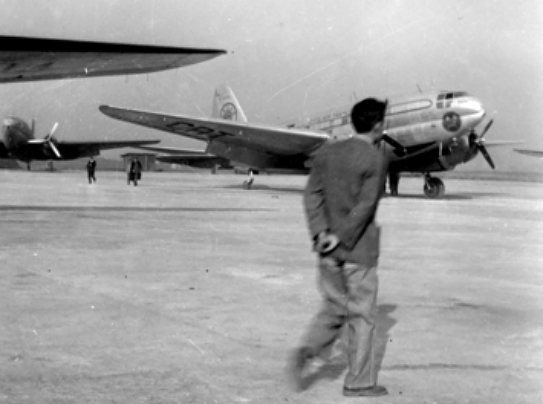
Propellers: 2-bladed variable-pitch propeller.Powerplant: 1 × Zhouzhou (SMPMC) HS-6A radial engine, 213 kW (286 hp).Airfoil: root: Clark YH (14.5%) tip: Clark YH (9.3%).The pilot was uninjured.ĭata from Jane's Aircraft Recognition Guide Ī privately owned CJ6A was involved in a Jcollision with a lawn maintenance machine while attempting a landing ( ) killing the operator of the lawn machine and damaging the aircraft. A Sri Lanka Air Force PT-6 aircraft which took off from China Bay, Trincomalee crashed near Kantale, Sri Lanka on 15th December 2020 killing trainee pilot on board.The AWAL operates under an approval from the Australian government's Civil Aviation Safety Authority (CASA) to manage the operation of ex-military aircraft. This is administered by the Australian Warbirds Association Limited (AWAL). In Australia, CJ-6 aircraft are generally operated in the Limited Category. The aircraft appears on the civil register of the US, Australia, New Zealand, UK, South Africa and other countries. A used CJ-6 in the United States can cost as little as $75,000. People's Liberation Army Navy Air Forceĭue to its low price and sturdy construction, the CJ-6A is a popular hobby plane.Bangladesh Air Force: ≤ 24 PT-6 in service.If an external source is not available then the engine can be started by hand swinging the propeller.

An engine-driven air pump recharges the system however if air pressure is too low to start the engine then the onboard air tank can be recharged by an external source.

One thing to note is that the Nanchang CJ-6 makes extensive use of pneumatics to control the gear and flap extension/retraction, operate the brakes and start the engine.

It is expected Hongdu/ Yakovlev joint developed CJ-7 Trainer (L-7) primary trainer will replace CJ-6s in PLAAF. In 1965 the HS-6 engine was upgraded to 285 hp and redesignated the HS-6A, and the aircraft equipped with the new power plant were designated the CJ-6A.Ī total production run estimated at more than 3,000 aircraft supplied CJ-6 aircraft for PLAAF training, as well as for export (as the PT-6) to countries including Albania, Bangladesh, Cambodia, North Korea, Tanzania, and Sri Lanka. Power for the prototype was provided by a Czech-built horizontally-opposed piston engine, but flight testing revealed the need for more power, so a locally manufactured version of the Soviet AI-14P 260 hp radial, the Housai HS-6, was substituted along with a matching propeller, and with that change the CJ-6 was approved for mass production. The first flight of the CJ-6 was completed on Augby Lu Maofan and He Yinxi. Wind tunnel testing validated the design, and in May 1958 the program was transferred to the Nanchang Aircraft Manufacturing factory where Chief Engineer Gao Zhenning initiated production of the CJ-6. The dihedral and an angular vertical tail distinguish it externally from the otherwise rather similar Yak-18A. The design they delivered featured an aluminum semi-monocoque fuselage, flush-riveted throughout, and introduced a modified Clark airfoil wing design with pronounced dihedral in the outer sections. ĭuring late 1957 Aeronautical Engineers Cheng Bushi and Lin Jiahua began work in Shenyang on a trainer design that addressed the shortcomings of the Yak-18A. Xu Shunshou and Huang Zhiqian, then China's top aircraft designers, were also involved. As the Shenyang Aircraft Factory already had experience building the Shenyang JJ-1 begun technical research for the CJ-6, more than 20 Shenyang designers were transferred to Nanchang, including chief designers Tu Jida and Lin Jiahua. The aircraft was designed in 1958 by the Nanchang Aircraft Factory (now Hongdu Aviation). When the Soviet Union developed the Yak-18A, PLAAF engineers decided that its performance and design would not suit China's needs.

However, advancements in pilot training brought a need for a new aircraft with improved performance and a tricycle landing gear. Its predecessor, the Nanchang CJ-5, was a licence-built version of the Yak-18. The CJ-6 (Chu Jiao 初教 = Chuji Jiaolianji 初级教练机 = basic trainer aircraft) is an all-original Chinese design that is commonly mistaken for a Yak-18A.


 0 kommentar(er)
0 kommentar(er)
